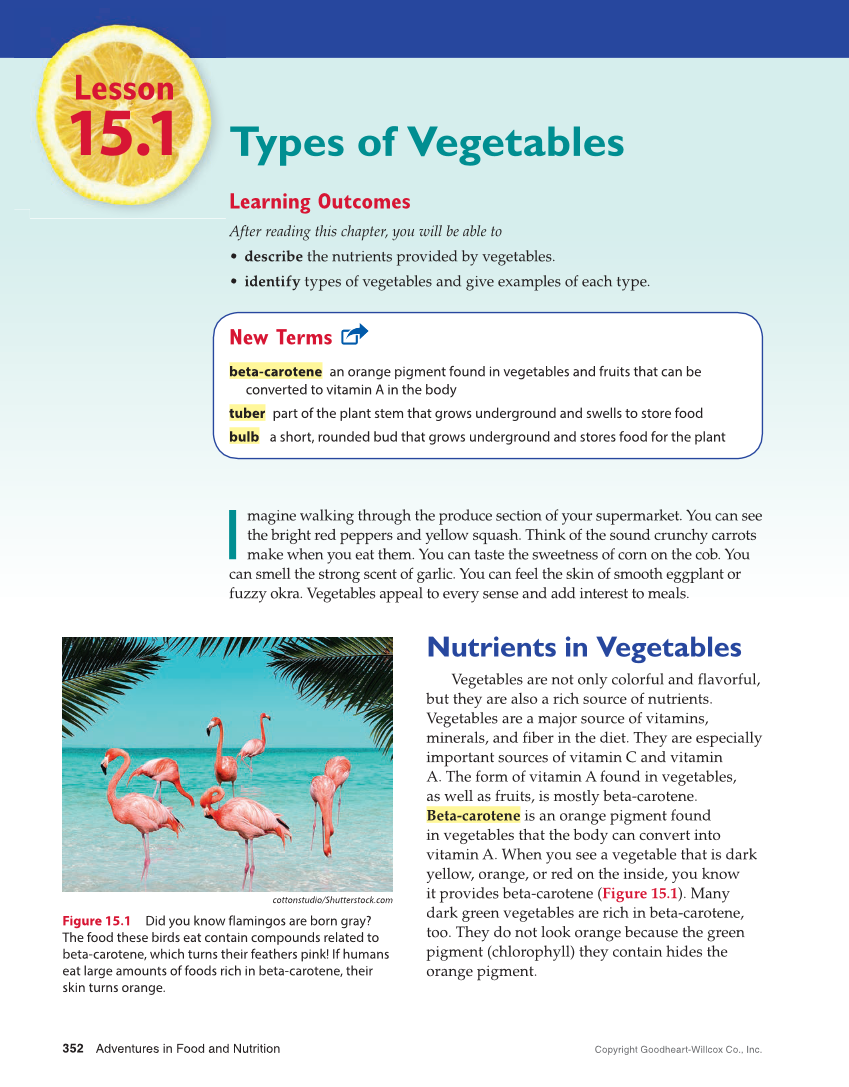Lesson 15.1 Types of Vegetables Learning Outcomes After reading this chapter, you will be able to • describe the nutrients provided by vegetables. • identify types of vegetables and give examples of each type. I magine walking through the produce section of your supermarket. You can see the bright red peppers and yellow squash. Think of the sound crunchy carrots make when you eat them. You can taste the sweetness of corn on the cob. You can smell the strong scent of garlic. You can feel the skin of smooth eggplant or fuzzy okra. Vegetables appeal to every sense and add interest to meals. Nutrients in Vegetables Vegetables are not only colorful and flavorful, but they are also a rich source of nutrients. Vegetables are a major source of vitamins, minerals, and fiber in the diet. They are especially important sources of vitamin C and vitamin A. The form of vitamin A found in vegetables, as well as fruits, is mostly beta-carotene. Beta-carotene is an orange pigment found in vegetables that the body can convert into vitamin A. When you see a vegetable that is dark yellow, orange, or red on the inside, you know it provides beta-carotene (Figure 15.1). Many dark green vegetables are rich in beta-carotene, too. They do not look orange because the green pigment (chlorophyll) they contain hides the orange pigment. New Terms beta-carotene an orange pigment found in vegetables and fruits that can be converted to vitamin A in the body tuber part of the plant stem that grows underground and swells to store food bulb a short, rounded bud that grows underground and stores food for the plant cottonstudio/Shutterstock.com Figure 15.1 Did you know flamingos are born gray? The food these birds eat contain compounds related to beta-carotene, which turns their feathers pink! If humans eat large amounts of foods rich in beta-carotene, their skin turns orange. Adventures in Food and Nutrition Copyright Goodheart-Willcox Co., Inc. 352
